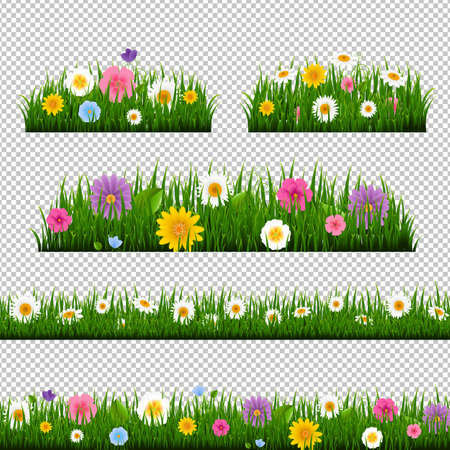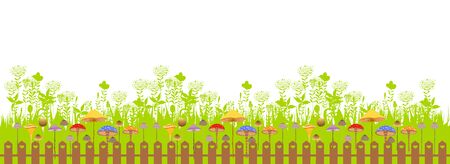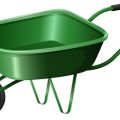Cultivating the Dream
For many Americans, the backyard is more than just a patch of green—it’s a canvas for creativity and a space to grow something meaningful. The idea of building a backyard flower farm often begins as a quiet dream, inspired by afternoons spent digging in the dirt or arranging wildflowers picked from a local meadow. But what turns this simple love for blooms into a thriving business? It’s about blending personal passion with that distinctive American spirit of entrepreneurship and community.
The Spark: Passion Meets Purpose
Maybe you’ve always admired the sunflowers stretching toward the sky or the gentle sway of cosmos in the summer breeze. Or perhaps you find peace in tending to roses at dawn, coffee mug in hand. Whatever your story, starting a backyard flower farm is rooted in a love for beauty and nature—a desire to share that joy with others while nurturing something of your own.
Why Start a Backyard Flower Farm?
| Personal Motivation | Community Connection | Entrepreneurial Opportunity |
|---|---|---|
| Express creativity through floral design | Supply fresh, local flowers to neighbors and markets | Turn a hobby into a side income or full-time venture |
| Find relaxation and purpose outdoors | Support pollinators and local ecosystems | Join the growing movement for sustainable, small-scale agriculture |
The American Ethos: Creativity & Entrepreneurship
Across the U.S., there’s an enduring belief that anyone can build something special from their own backyard. Whether it’s a lemonade stand or rows of zinnias ready for a farmers’ market, Americans cherish the chance to create, connect, and grow. Starting a backyard flower farm taps into this tradition—celebrating self-reliance, ingenuity, and the joy of sharing homegrown beauty with friends, family, and even strangers passing by.
Nurturing More Than Flowers
As you begin planning your backyard flower farm, remember: it’s not just about planting seeds in soil—it’s about cultivating dreams, relationships, and new possibilities. This journey starts with passion and blossoms into something far greater than you imagined.
2. Planning Your Backyard Oasis
Transforming your backyard into a blooming flower farm begins with thoughtful planning. The right site, healthy soil, and an intentional design will set the stage for success—especially when you incorporate sustainable practices and embrace the floricultural diversity that thrives in various U.S. climates.
Choosing the Ideal Site
Start by observing your yard throughout the day. Flowers need plenty of sunlight, so aim for a spot that gets at least 6 hours of direct sun. Consider proximity to water sources and how accessible your space is for daily care. Think about natural windbreaks, drainage patterns after rain, and possible slopes that might affect watering.
| Region | Best Sun Exposure | Drainage Needs | Key Considerations |
|---|---|---|---|
| Northeast & Midwest | Full sun (6-8 hrs) | Well-drained loam | Protect from late frosts |
| Southeast | Morning sun, afternoon shade | Sandy or loamy soil, avoid soggy spots | Humidity-tolerant varieties |
| Southwest & West Coast | Full sun, partial shade in peak heat | Fast-draining soil (amend clay) | Drought-resistant flowers, mulching |
| Pacific Northwest | Filtered or dappled sun | Moist but not waterlogged soil | Mildew-resistant species, airflow |
Soil Preparation: Laying the Foundation for Growth
Your soil is the heartbeat of your backyard oasis. Start with a simple soil test—available at most garden centers or local extension offices—to check pH and nutrient levels. Most cut flowers prefer a neutral to slightly acidic pH (6.0–7.0).
- Add compost: Enrich your beds with organic matter to boost fertility and structure.
- Avoid chemical fertilizers: Opt for natural amendments like composted manure or leaf mold.
- No-till methods: Preserve beneficial microbes and earthworms by disturbing the soil as little as possible.
- Cultivate cover crops: Between seasons, plant clover or ryegrass to prevent erosion and replenish nutrients.
Designing with Purpose and Beauty in Mind
A well-designed flower farm balances functionality with visual appeal. Arrange planting beds in rows or blocks for easy access and efficient watering. Incorporate pathways made of mulch or stepping stones to keep feet dry and plants safe from trampling.
Diversity Matters: Selecting Flowers for Every Season and Pollinator Support
Choose a mix of annuals, perennials, and native wildflowers suited to your region’s climate. This not only extends your harvest window but also supports bees, butterflies, and birds essential for pollination.
| Flower Type | Bloom Time (U.S.) | Sustainability Benefit |
|---|---|---|
| Zinnias (Annual) | Summer-Fall | Drought-tolerant, attracts pollinators |
| Echinacea (Perennial) | Midsummer-Fall | Supports native bees; low maintenance |
| Lupine (Native Perennial) | Spring-Early Summer | Nitrogen-fixer; feeds butterflies |
| Daffodil (Bulb) | Early Spring | Pest-resistant; early food source for bees |
| Cosmos (Annual) | Midsummer-Frost | Tolerates poor soils; attracts beneficial insects |
Sustainable Tips for American Flower Farmers:
- Mulch generously: Suppresses weeds and conserves moisture—ideal for hot summers or drought-prone states.
- Irrigate efficiently: Drip systems use less water than sprinklers—perfect for conserving resources out West.
- Select regionally adapted varieties: Local extension services can recommend flowers that thrive in your specific USDA zone.
- Create wildlife habitat: Include hedgerows or native grasses along borders to welcome helpful insects and birds.
- Avoid pesticides: Encourage beneficial bugs by letting nature balance itself whenever possible.
The foundation of your backyard flower farm is more than just dirt—it’s a living canvas shaped by climate, creativity, and care for the environment. With these practical steps tailored to American gardens large and small, you’re ready to nurture beauty that blooms all season long.

3. Selecting and Growing Blooms
Choosing the Right Flowers for Your Backyard Flower Farm
When building a backyard flower farm, one of the most exciting steps is selecting which blooms to grow. In the U.S., focusing on both seasonal and native flowers is not only eco-friendly but also aligns beautifully with current American garden trends. Native flowers tend to be more resilient, support local pollinators, and require less maintenance.
Popular Seasonal & Native Flowers Across the U.S.
| Season | Native/Popular Flowers | Notes |
|---|---|---|
| Spring | Tulips, Daffodils, Bluebells, Coneflowers | Great for early color and attracting bees |
| Summer | Zinnias, Black-eyed Susans, Sunflowers, Bee Balm | Vivid colors; thrive in warm temperatures |
| Fall | Asters, Goldenrod, Sedum, Dahlias | Adds late-season texture and hues |
| Winter (Mild Climates) | Pansies, Camellias, Hellebores | Some regions can support winter bloomers |
Creating a Planting Schedule That Works for You
The success of your flower farm depends on a well-thought-out planting calendar. Consider your USDA Plant Hardiness Zone to determine the best time for sowing seeds or transplanting seedlings. Stagger planting dates for continuous blooms throughout the season—this way, youll always have something fresh to harvest or sell.
Sample Planting Timeline by Region
| Region | Spring Sowing Timeframe | Summer Sowing Timeframe | Fall Sowing Timeframe |
|---|---|---|---|
| Northeast/Midwest | March–April (indoors), May (outdoors) | June–July (succession planting) | August–September (cool season crops) |
| Southeast/Southwest | February–March (outdoors) | April–July (heat-tolerant varieties) | September–October (fall annuals) |
| Pacific Northwest/California Coast | February–April (mild winters allow earlier starts) | May–July (for summer cut flowers) | August–October (overwintering biennials) |
Sustainable & Eco-Friendly Cultivation Tips
Cultivating blooms with nature in mind is a growing trend among American gardeners. Using organic compost instead of synthetic fertilizers, practicing crop rotation, and choosing drought-resistant varieties are simple ways to maintain healthy soil and conserve water. Encouraging beneficial insects like ladybugs can help control pests naturally without harsh chemicals.
Eco-Friendly Tips at a Glance:
- Add mulch: Retains moisture and suppresses weeds.
- Create pollinator patches: Dedicate a corner to wildflowers or milkweed for butterflies and bees.
- Irrigate wisely: Drip irrigation systems use less water than sprinklers.
- Avoid pesticides: Try neem oil or insecticidal soap if needed.
Selecting the right blooms and cultivating them sustainably will help your backyard flower farm flourish while making a positive impact on your environment and community.
4. Harvesting and Post-Harvest Care
Hand-Picking: Timing Is Everything
The moment you pick your flowers makes all the difference in how long they stay fresh and beautiful. Early mornings, when the air is cool and the blooms are fully hydrated, are perfect for harvesting. Use clean, sharp snips or garden scissors to avoid crushing the stems. Always choose flowers just as they begin to open—too tight and they won’t show their true colors; too open and they won’t last as long.
Best Practices for Cutting Flowers
| Step | Why It Matters | Tips |
|---|---|---|
| Use Clean Tools | Prevents disease from spreading | Wipe blades with alcohol between cuts |
| Cut at an Angle | Maximizes water uptake | About a 45-degree angle works best |
| Remove Lower Leaves | Keeps water clean in storage buckets | Strip any leaves that will be below the waterline |
| Dunk Stems Right Away | Keeps flowers hydrated after cutting | Have a bucket of cool water handy in the field |
Storing Flowers for Market or Home Display
Once harvested, getting your blooms into water quickly is key. Store them in a cool, shady spot out of direct sunlight and wind. If you plan to sell at a farmers’ market or design bouquets at home, keep your buckets filled with fresh, clean water. Some flower farmers add a bit of floral preservative to extend vase life even more.
Ideal Storage Conditions Table
| Condition | Ideal Range |
|---|---|
| Temperature | 34–38°F (1–3°C) |
| Humidity | 90–95% |
| Avoid Ethylene Gas Exposure* | No ripening fruits/veggies nearby! |
| Water Quality | Change daily, keep buckets clean |
*Ethylene gas speeds up flower aging—keep your blooms away from apples, bananas, and other fruits.
Prolonging Vase Life for Your Customers (and Yourself!)
- Re-cut stems: Before arranging in vases, give each stem a fresh angled cut under running water.
- Add floral preservative: If you don’t have commercial preservative, mix a teaspoon of sugar and a few drops of bleach into the water—it helps nourish blooms and keeps bacteria at bay.
- Avoid direct sunlight: Place arrangements out of hot spots to slow wilting.
- No leaves in water: Always remove any foliage that could rot below the waterline.
- Tidy regularly: Remove spent blooms to keep bouquets looking fresh and prolong the beauty.
Caring for Your Harvest Keeps Your Flower Farm Thriving!
5. Turning Blooms into Business
Steps to Launch Your Flower Business
Starting a backyard flower farm is a labor of love, but turning your blooms into a thriving business takes planning and heart. Here’s how you can go from passionate grower to local flower entrepreneur—all with an authentic American spirit.
Branding: Telling Your Story
Your brand is more than just a logo—it’s the story of why you grow flowers, what makes your blooms unique, and how you connect with your community. Choose a name that reflects your personality or the special vibe of your garden. Think about colors, fonts, and imagery that capture the soul of your backyard farm. Share behind-the-scenes photos, planting stories, and your favorite flower varieties on social media to invite people into your world.
Local Marketing Strategies
Marketing in the U.S. is all about connecting with neighbors and building trust. Here are some simple ideas:
| Strategy | Description |
|---|---|
| Social Media | Create Instagram and Facebook pages to share daily updates, bouquet photos, and farm news. |
| Email Newsletter | Send out weekly emails with availability, upcoming events, and tips for caring for fresh flowers. |
| Local Flyers & Posters | Hang up colorful flyers at coffee shops, libraries, and community centers. |
| Collaborate with Local Businesses | Partner with cafes or boutiques to display small arrangements or host pop-up sales. |
Farmers’ Markets: The Heartbeat of Local Sales
Participating in farmers’ markets is an iconic way to meet customers face-to-face. Bring your brightest bouquets and set up an inviting booth—think baskets, mason jars, and hand-written signs for that homegrown touch. Offer single stems alongside mixed bouquets so everyone finds something they love. Smile, share growing tips, and let your passion shine through every conversation.
Building Community Connections
Your backyard flower farm can blossom into a cornerstone of the neighborhood. Host seasonal workshops—like DIY bouquet making or gardening basics—for families and garden lovers. Volunteer flowers for school events or local fundraisers to spread beauty and goodwill. Every connection strengthens your roots in the community and grows word-of-mouth support.
Quick Tips for Building Lasting Relationships:
- Remember regular customers by name—it means a lot!
- Share surplus blooms with neighbors or local nonprofits.
- Create a “pick-your-own” day for families to experience the joy of harvesting fresh flowers together.
With thoughtful branding, genuine marketing, lively market participation, and deep community ties, your backyard flower farm can truly thrive as a beloved local business—one stem at a time.
6. Cultivating Community and Sustainability
Building a backyard flower farm is about more than growing beautiful blooms—its about planting roots in your local community and nurturing the environment. American values often center on connection, stewardship, and making a positive impact where you live. Here’s how you can weave these ideals into your backyard flower farm.
Fostering Connections with Neighbors
Your flower farm can become a neighborhood hub. Sharing your passion for flowers is a wonderful way to meet people and build lasting friendships. Consider hosting seasonal open garden days, inviting neighbors to pick their own bouquets, or collaborating with local schools for educational tours. These small gestures not only spread joy but also create a sense of belonging.
| Community Initiative | Benefits |
|---|---|
| Open Garden Days | Brings neighbors together, encourages sharing and conversation |
| Flower Picking Events | Engages families, supports local traditions, and introduces kids to gardening |
| Workshops & Classes | Educates the community about sustainable practices and floral design |
| Partnering with Local Schools | Inspires young gardeners and strengthens community bonds |
Supporting Pollinators: A Backyard Sanctuary
Proudly American landscapes often celebrate nature’s helpers—bees, butterflies, and hummingbirds. Supporting pollinators is vital for both healthy gardens and local ecosystems. Choose native flowers like coneflowers, black-eyed Susans, and milkweed that thrive in your region and provide food for pollinators. Avoid pesticides, use organic mulches, and install small water sources to create a safe haven right in your backyard.
Top Native Flowers for Pollinators by Region
| Region | Popular Native Flowers | Main Pollinators Attracted |
|---|---|---|
| Northeast | Echinacea, Bee Balm, Goldenrod | Bees, Butterflies |
| Southeast | Coreopsis, Milkweed, Blazing Star | Butterflies, Hummingbirds |
| Midwest | Coneflower, Prairie Clover, Sunflowers | Bees, Birds |
| West Coast | California Poppy, Lupine, Yarrow | Bees, Butterflies, Hummingbirds |
| Southwest | Purple Sage, Blanket Flower, Penstemon | Bees, Moths, Hummingbirds |
Implementing Green Initiatives That Matter Locally
Sustainability starts at home—and small steps make a big difference. Composting garden waste turns scraps into rich soil. Collecting rainwater helps conserve resources during dry spells. Using recycled materials for raised beds or trellises gives new life to old items while reducing landfill waste. These eco-friendly choices reflect American ingenuity and respect for the land.
Sustainable Practices for Your Flower Farm:
- Composting: Turn kitchen scraps and garden clippings into valuable fertilizer.
- Rainwater Harvesting: Set up barrels to collect rain for watering your flowers.
- No-Till Gardening: Protects soil health and reduces erosion.
- Pesticide-Free Zones: Use natural pest control methods to keep your garden safe for pollinators.
Cultivating community and sustainability isn’t just good for business—it’s good for everyone. By opening your backyard flower farm to others and adopting green practices that fit your local ecosystem, you’re helping your neighborhood bloom as beautifully as your garden.


